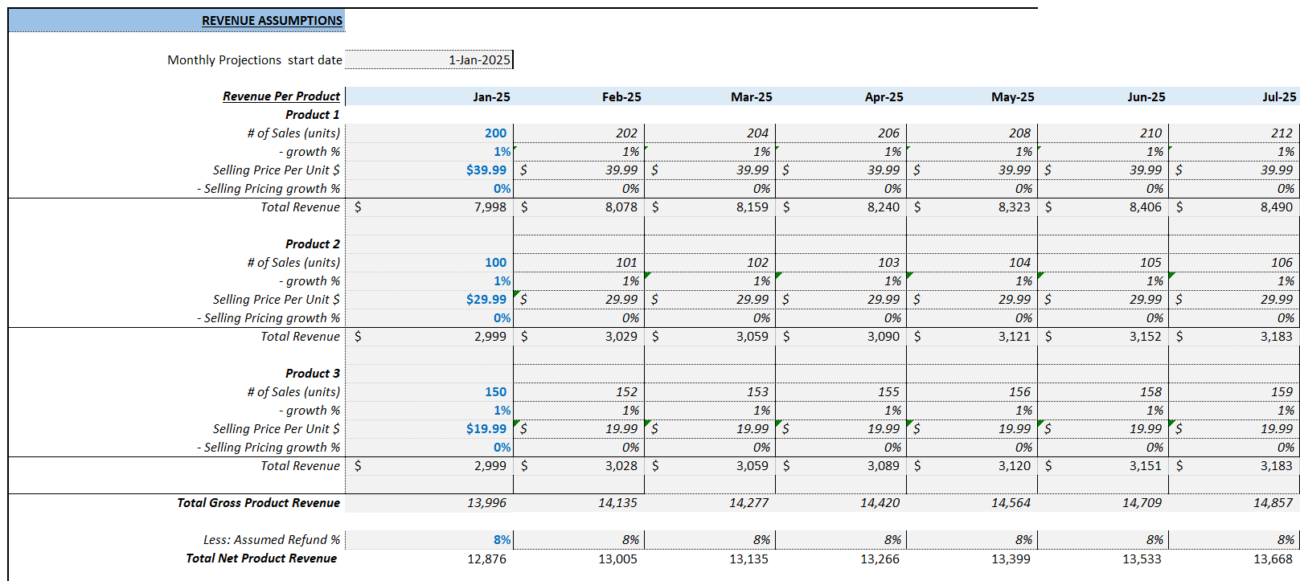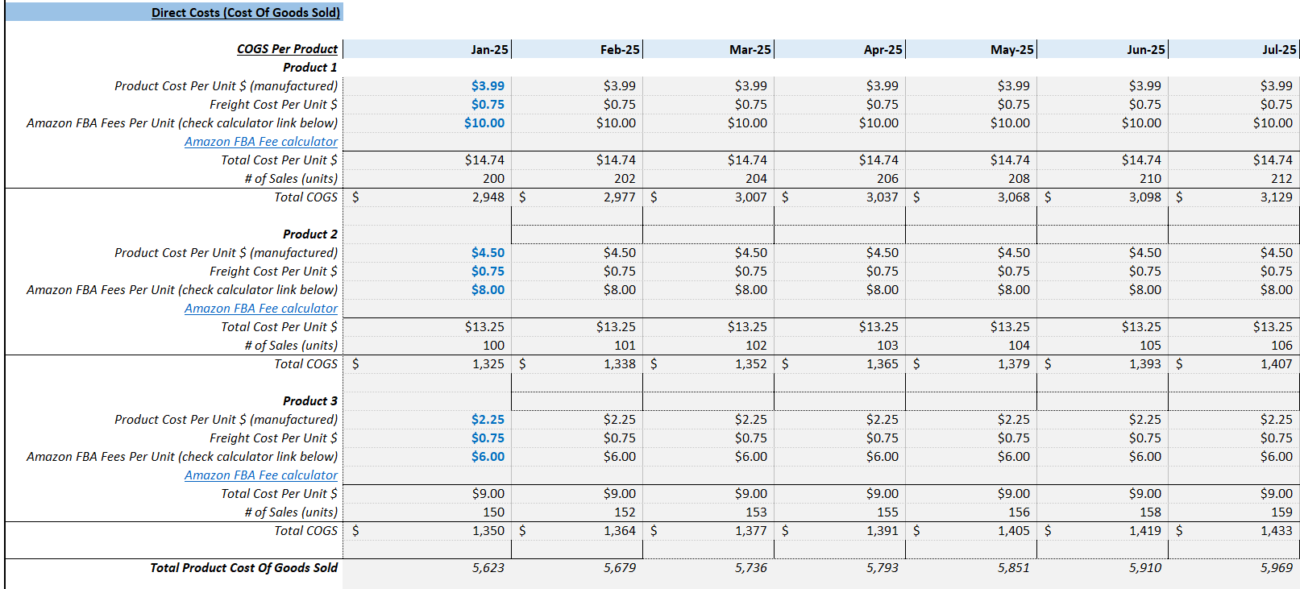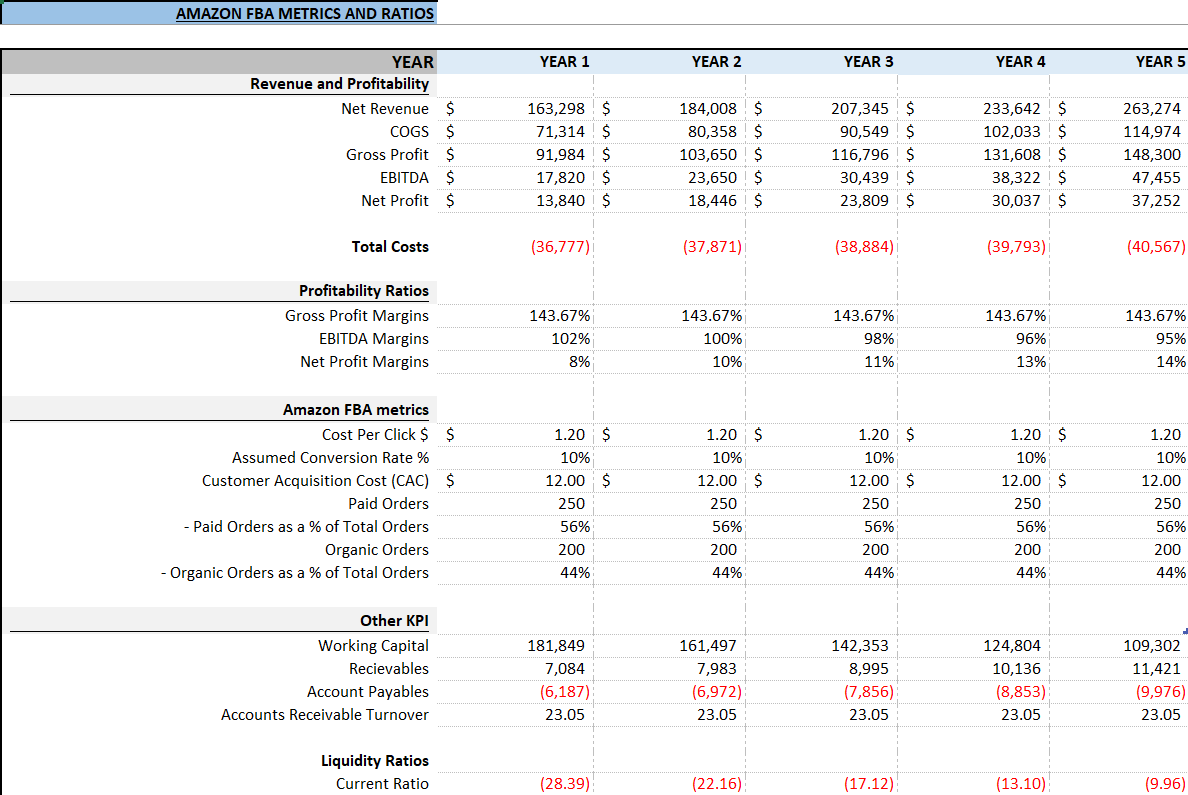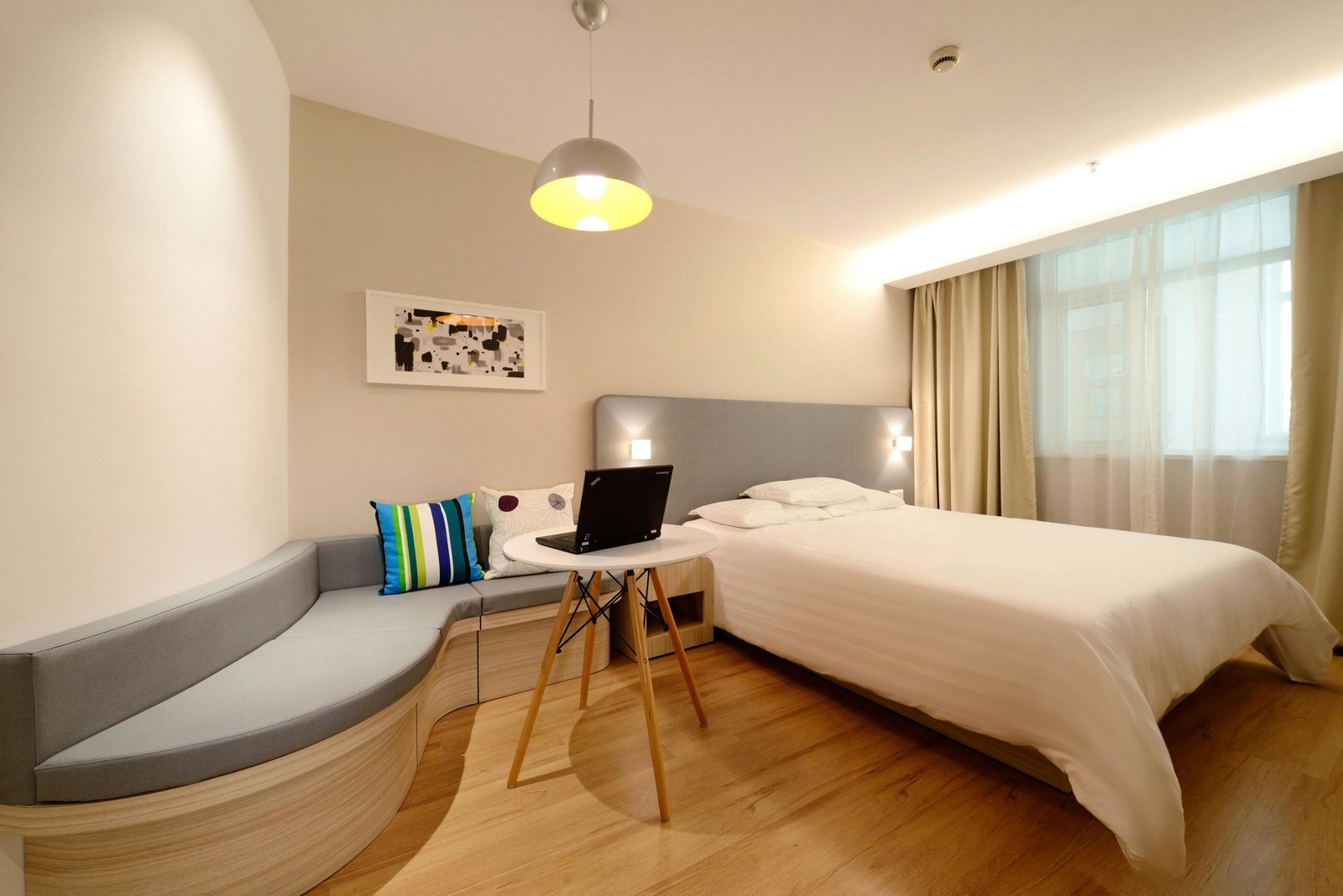Selling on Amazon through Fulfillment by Amazon (FBA) is a powerful way to scale an e-commerce business. Accessing Amazon’s vast logistics network, customer service, and Prime badge can massively boost sales. But Amazon doesn’t offer these services for free.
Understanding Amazon FBA fees is crucial for a profitable business. These costs can quietly eat into your margins if you’re not vigilant. The good news? With the right knowledge and strategy, you can optimize your fees and maximize profit margins. We have also built an Amazon FBA Financial Model template for those looking for a ready-to-go financial model for their business. Just input your businesses assumptions including product details (price, costs etc), and our model will do the rest. Our complete three-way financial model includes an Income Statement, Balance Sheet, and Cash Flow Statement, along with an Inventory Statement to effectively track all your inventory movements too.

What Is Amazon FBA?
Fulfillment by Amazon (FBA) is a service where Amazon stores, packs, ships, and manages customer service for your products. You send your inventory to Amazon’s fulfillment centers, and they handle the rest.
This convenience helps in running an e-commerce business without catering to warehousing and shipping. Yet, this ease of use involves costs, specifically FBA fees.
Types of Amazon FBA Fees
Fulfillment Fees
These per-unit fees cover picking, packing, and shipping your product.
- Standard-size item under 1 lb: ~$3.22
- Standard-size item 1-2 lb: ~$4.25
- Oversize items: Start around $8
These rates change annually, so consult Amazon Seller Central Fee Schedule for the latest fees.
Referral Fees
Amazon takes a percentage of your product’s sale price as commission. Rates vary from 8% to 15% depending on the category.
- High-end electronics: 8%
- Apparel and accessories: 17%
- Beauty, home, kitchen: ~15%
Referral fees apply even if you don’t use FBA and are an Amazon-wide commission.
Storage Fees
Amazon charges for storing your products in their facilities.
- Monthly Storage Fees:
- Standard-size items (Jan–Sep): $0.87 per cubic foot
- Standard-size items (Oct–Dec): $2.40 per cubic foot
- Long-Term Storage Fees:
- Inventory stored for more than 181 days incurs extra fees.
Monitor your inventory age in Seller Central to avoid these additional fees.


Hidden or Overlooked Fees
- Removal and Disposal Fees: Costs ~$0.50–$0.60 per standard unit.
- Inventory Placement Service: Avoid splitting shipments for a fee(~$0.30–$0.40/unit).
- Unplanned Services Fee: Arriving unprepped shipments incur varied charges.
Understanding returns are also vital; fees aren’t always refunded fully.

How to Calculate Your Profit Margin
Calculate your profit using:

Then determine your Net Margin (%):


Strategies to Reduce FBA Fees & Boost Margins
Optimize Product Dimensions and Weight
Amazon charges more for heavier products. Slimmer, efficient packaging can save over a dollar per unit, verified through tools like Amazon’s FBA calculator.
Bundle Products
Bundling complementary items increases AOV and allows paying one fulfillment fee instead of many. As noted, bundling enhances item visibility.
Reduce Storage Time
Utilize Amazon’s Inventory Health Report to keep track of slow-moving stock, implementing JIT inventory practices and avoiding aging inventory fees.

Frequently Asked Questions
What are Amazon Australia Online Seller Fees?
They include various categories like fulfillment, referral, and inventory fees. Each is designed to cover Amazon’s service costs.
How does Amazon charge for Fulfillment by Amazon Fees?
These are per-unit fees covering picking, packing, and shipping costs. Rates vary based on size and weight.
What is the best way to minimize FBA seller costs?
By optimizing packaging, reducing storage time, and bundling items to limit fulfillment fee hits, among other strategies.
Final Thoughts!
Amazon FBA is a powerful e-commerce tool but understanding the fee structure is essential. By optimizing product sizing, inventory management, advertising, supplier negotiations, and fee tracking, margins are protected to build a sustainable and scalable FBA business.



